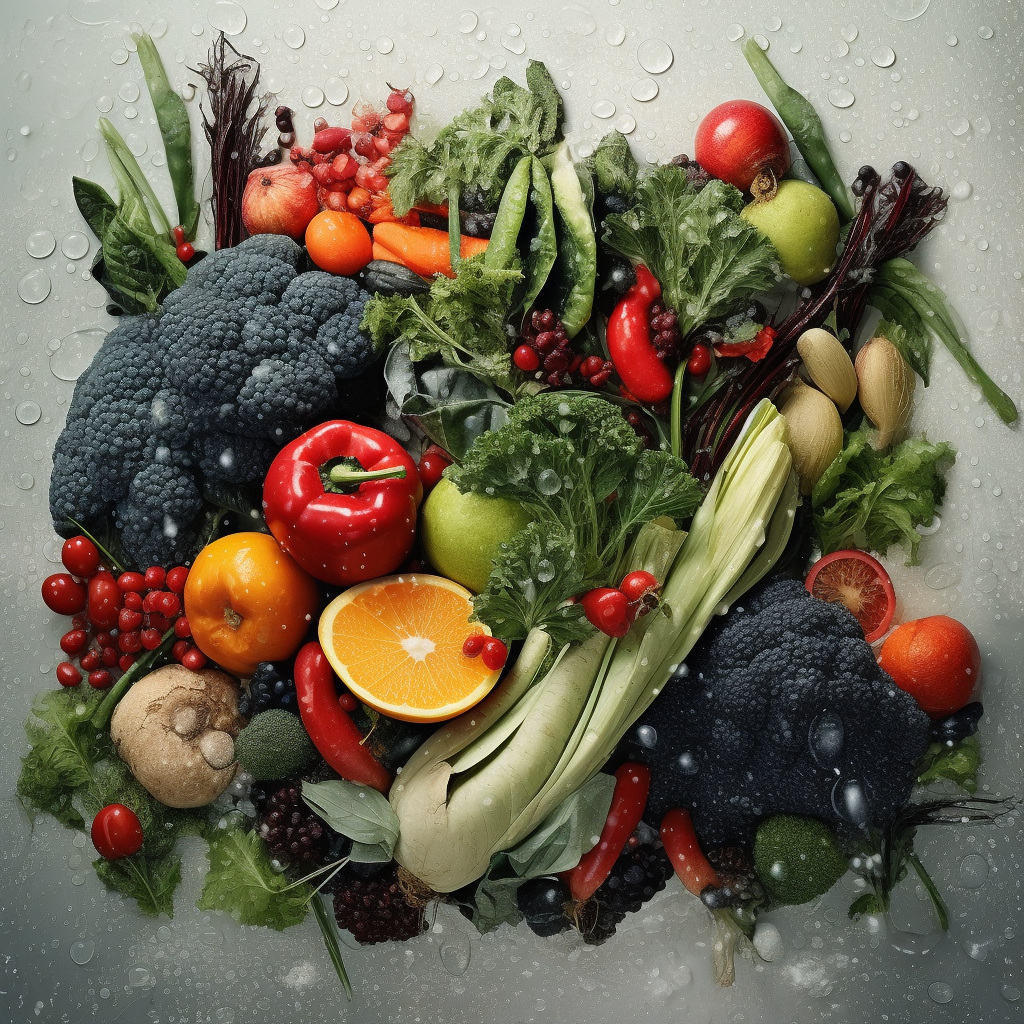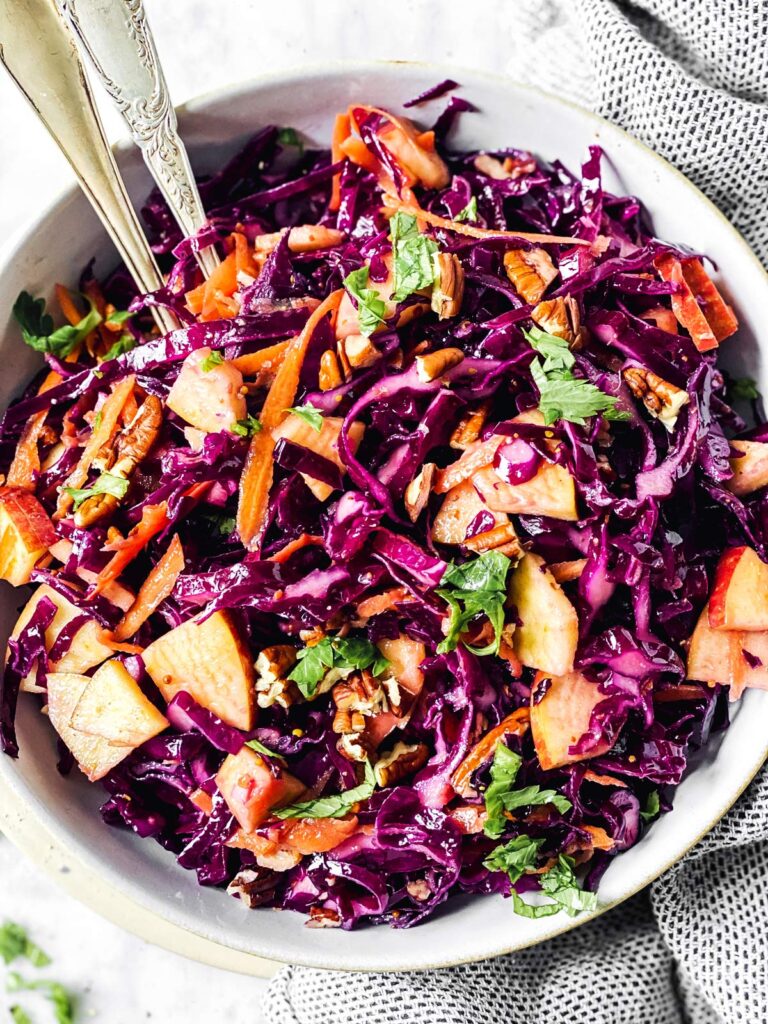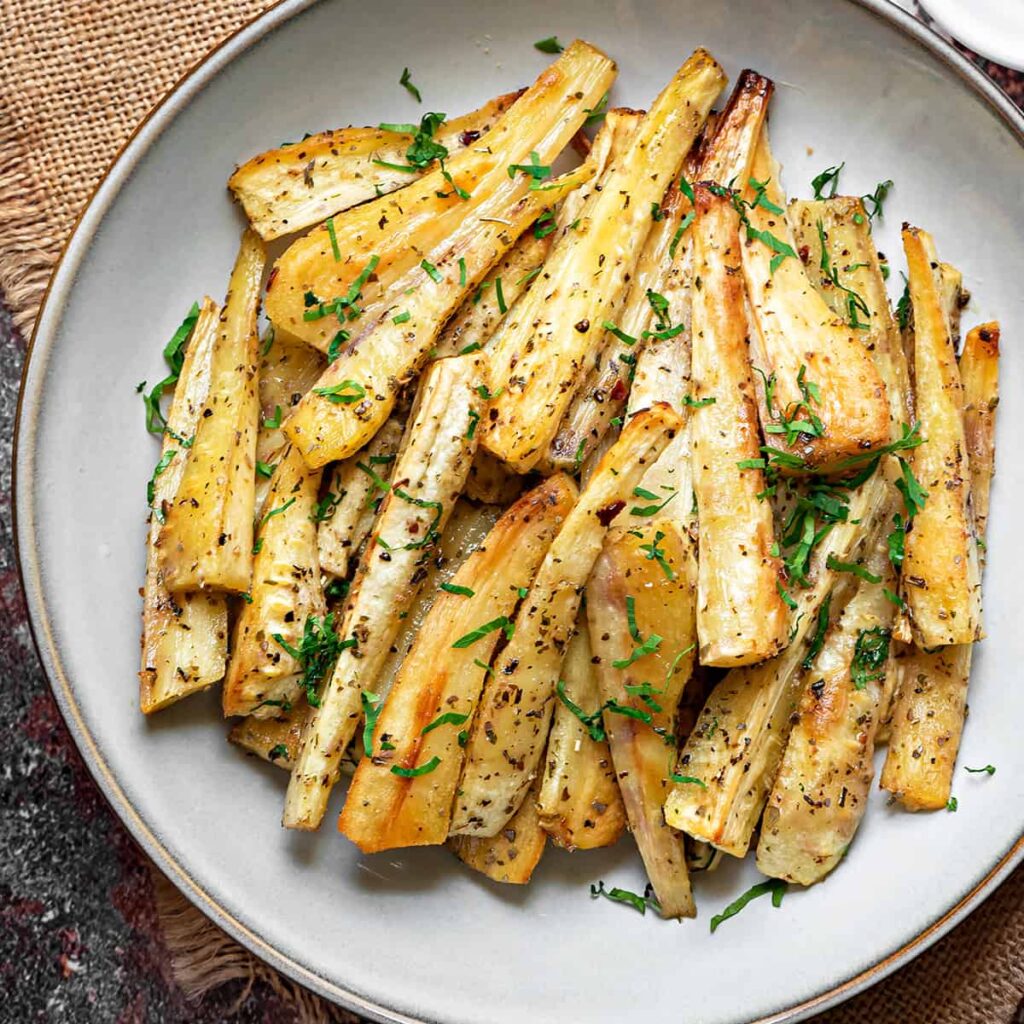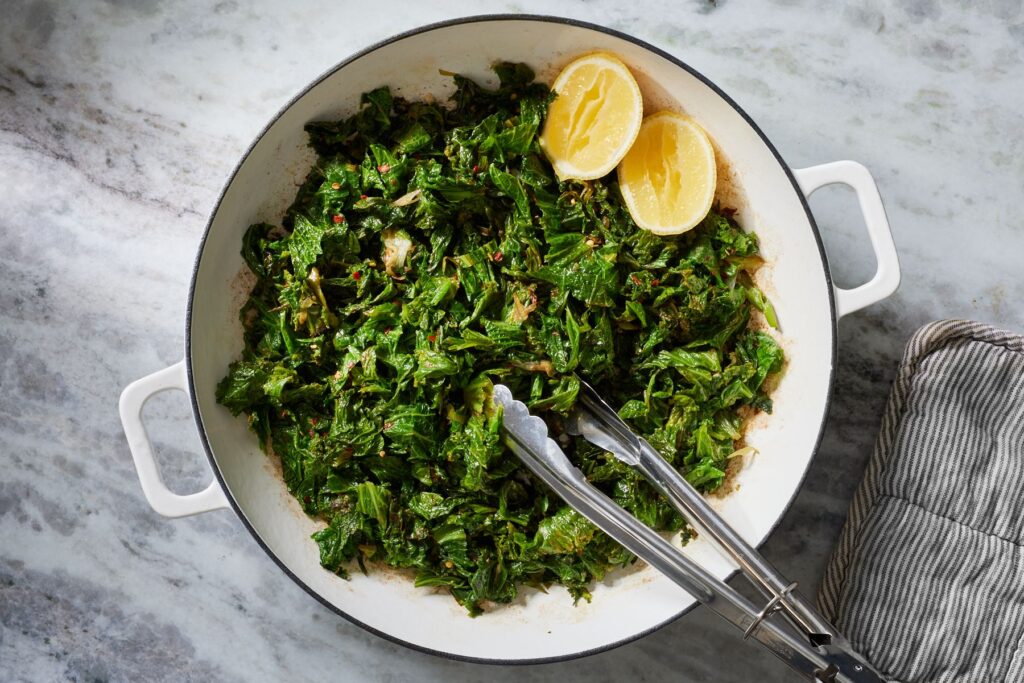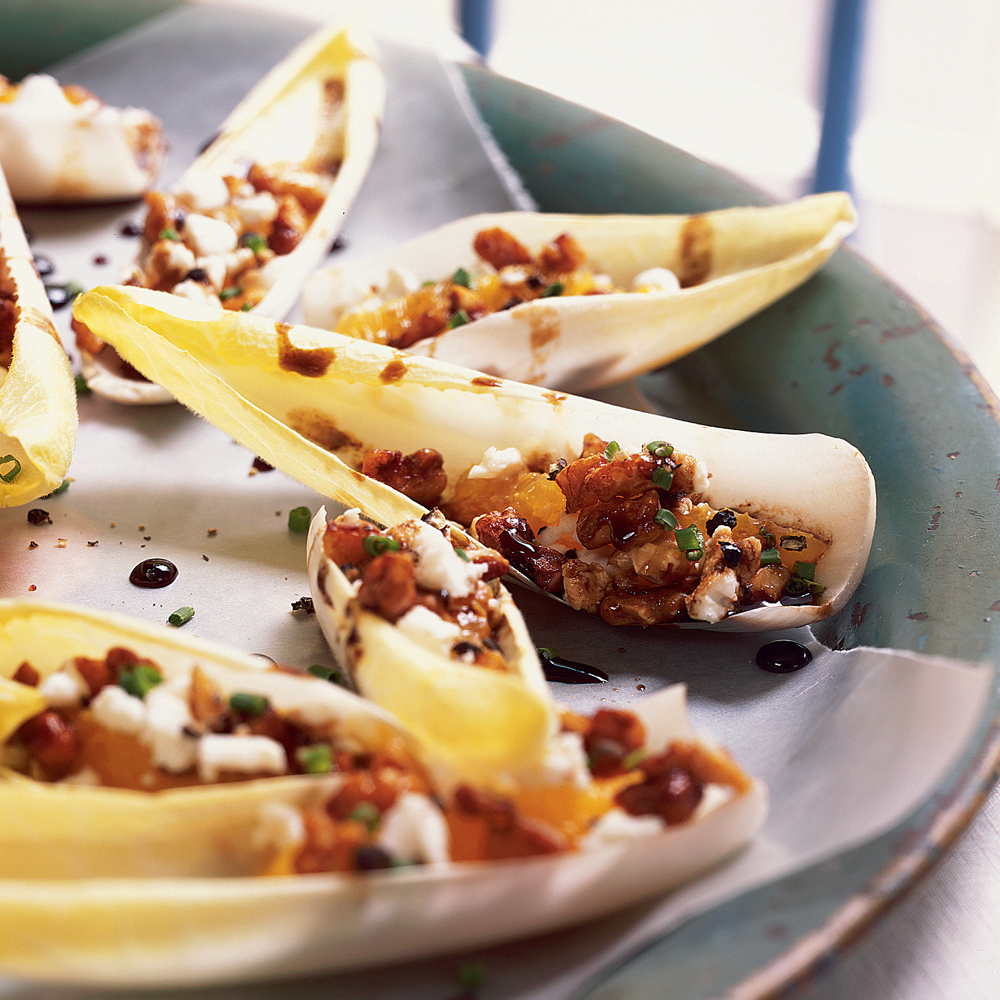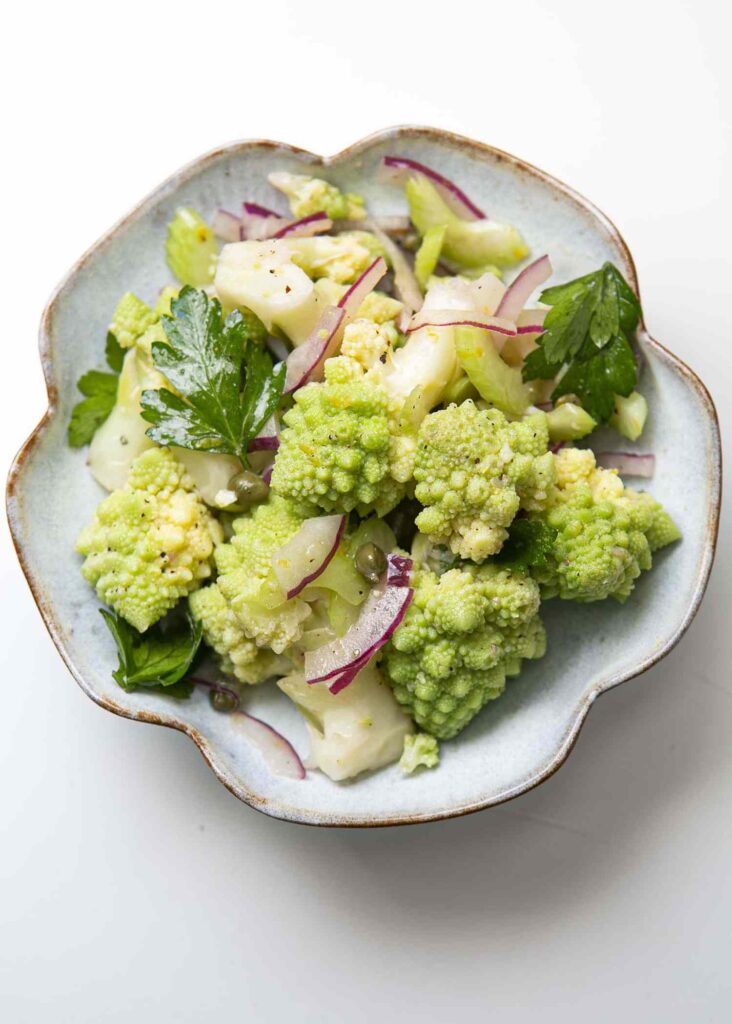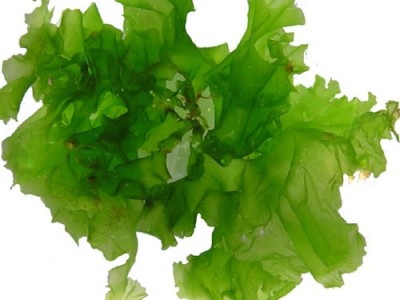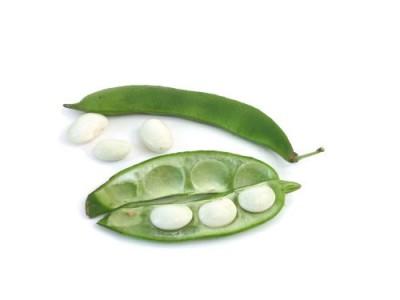
10 Best Vegetables For Winter Season
9)Sweet Dumpling Squash Vegetable
Red Cabbage Vegetable
1)Red Cabbage Vegetable For Winter Season:
Scientific Name – Brassica Oleracea Var. Capitata F. Rubra
Red cabbage, scientifically known as Brassica oleracea var. capitata f. rubra, is a vibrant and nutritious vegetable that adds a burst of color and flavor to a variety of dishes. With its striking deep purple or reddish color and crunchy texture, red cabbage has become a popular and delightful addition to cuisines around the world.
Originally cultivated in Europe, red cabbage has a rich history that spans centuries. It has since traveled across continents and found its way into diverse culinary traditions, from Europe to Asia, the Americas, and beyond.
Red cabbage’s vivid color comes from anthocyanins, which are potent antioxidants that offer various health benefits. These antioxidants give the cabbage its signature hue and contribute to its potential anti-inflammatory and immune-boosting properties.
In the culinary realm, red cabbage is highly versatile and can be enjoyed in both raw and cooked forms. When eaten raw, it adds a crisp and slightly peppery taste to salads and slaws. When cooked, it becomes tender and slightly sweeter, making it a delightful addition to stir-fries, braised dishes, and pickles.
Nutritionally, red cabbage is a powerhouse of essential vitamins and minerals. It is an excellent source of vitamins C and K, as well as important nutrients like vitamin A, potassium, and dietary fiber. Its nutritional density makes it a valuable addition to a balanced and health-conscious diet.
Red cabbage is not only appreciated for its culinary and nutritional merits but also for its association with seasonal celebrations and cultural traditions. It is often featured in festive dishes and holiday meals, bringing color and vibrancy to the table.
Cultivating red cabbage requires attention and care, but its rewarding harvest and visual appeal make it a favorite choice for home gardeners and professional growers alike.
In this article, we will explore the captivating world of red cabbage, from its historical journey to its modern-day culinary significance. We will savor delicious red cabbage-inspired recipes and uncover the health benefits that make red cabbage a cherished vegetable in the quest for nutritious and visually appealing meals. So, let’s embrace the vibrant and delicious charm of red cabbage, a vegetable that continues to enrich our culinary experiences and brighten our plates with its delightful attributes.
Health Benefits Of Red Cabbage Vegetable:
- Rich in Nutrients: Red cabbage is packed with essential vitamins and minerals, making it a highly nutritious vegetable. It is an excellent source of vitamin C, vitamin K, vitamin A, and antioxidants. These nutrients support immune function, help combat winter illnesses, and promote overall health and well-being.
- Antioxidant Power: Red cabbage contains powerful antioxidants, such as anthocyanins and vitamin C. These antioxidants help protect the body’s cells from damage caused by harmful free radicals, reducing the risk of chronic diseases and supporting cellular health.
- Immune System Support: Vitamin C is known to strengthen the immune system, which is particularly important during the winter months when the risk of colds and flu is higher. Red cabbage provides a significant amount of vitamin C, helping to support your body’s defense against illnesses.
- Anti-inflammatory Properties: Red cabbage contains compounds with anti-inflammatory properties, such as anthocyanins and glucosinolates. These compounds may help reduce inflammation in the body, which can be beneficial for winter-related conditions such as joint pain or inflammation caused by cold weather.
- Digestive Health: Red cabbage is high in fiber, which is essential for maintaining a healthy digestive system. Adequate fiber intake helps support regular bowel movements, prevents constipation, and promotes a healthy gut microbiome.
- Heart Health: Red cabbage is a heart-healthy vegetable. It contains compounds that can help reduce cholesterol levels, promote healthy blood pressure, and support cardiovascular health. The combination of fiber, antioxidants, and phytonutrients in red cabbage contributes to these heart-protective effects.
- Seasonal Availability: Red cabbage is commonly available during the winter season, making it a great addition to your winter diet. Consuming locally grown, fresh red cabbage can ensure you enjoy the maximum nutritional benefits it offer
Red Cabbage Used For Home:
- Raw Red Cabbage Salad: Red cabbage can be enjoyed raw in salads. Shred or thinly slice red cabbage and combine it with other ingredients like carrots, apples, or cranberries. Dress the salad with a vinaigrette or a creamy dressing of your choice. The vibrant color and crunch of red cabbage make it a great addition to any salad.
- Coleslaw: Red cabbage is a key ingredient in coleslaw. Combine shredded red cabbage with carrots, onions, and a creamy dressing. You can use mayonnaise, sour cream, or a combination of both as the base for the dressing. Add some vinegar, sugar, and your choice of seasonings for extra flavor.
- Braised Red Cabbage: Braising red cabbage creates a tender and flavorful side dish. Sauté onions in a pan, add shredded red cabbage, vinegar, apple cider, or apple juice, and simmer until the cabbage is tender. Add spices like cloves, cinnamon, or nutmeg for a warm and comforting flavor.
- Red Cabbage Stir-Fry: Stir-frying red cabbage is a quick and easy way to cook it while preserving its texture and vibrant color. Heat some oil in a pan, add thinly sliced red cabbage, and cook for a few minutes until it slightly wilts but still retains some crunch. Season with soy sauce or your favorite stir-fry sauce, and add other vegetables or protein for a complete meal.
- Pickled Red Cabbage: Pickling red cabbage is a popular way to preserve it and enjoy its tangy flavor. Thinly slice the cabbage and pack it in a jar with a pickling solution of vinegar, water, sugar, and spices. Let it sit in the refrigerator for a few days to develop its flavors. Pickled red cabbage can be used as a condiment, added to sandwiches, or served alongside meats and sausages.
- Red Cabbage Rolls: Red cabbage leaves can be used as a wrapper for stuffing. Blanch the cabbage leaves in boiling water until they become pliable, then fill them with a mixture of cooked grains, vegetables, and protein. Roll them up and bake them in the oven with a tomato sauce or broth until cooked through.
- Red Cabbage Juice: Red cabbage can be juiced to create a vibrant and nutritious beverage. Pass chopped red cabbage through a juicer and enjoy the freshly squeezed juice on its own or mix it with other fruits or vegetables for a custom juice blend.
Parsnip Vegetable
2)Parsnip Vegetable For Winter Season:
Scientific Name – Pastinaca Sativa
Parsnip, scientifically known as Pastinaca sativa, is a delicious and versatile root vegetable that has been a culinary favorite for centuries. With its sweet and earthy flavor, parsnips offer a unique taste experience, making them a treasured ingredient in a variety of dishes.
Believed to have originated in Eurasia, parsnips have a long history of cultivation, dating back to ancient times. They were once a staple food in Europe before the introduction of potatoes, and they have since made their way into various global cuisines.
Parsnips closely resemble carrots in appearance, but they have a paler color and a distinctive flavor. Their taste becomes even sweeter after a few frosts in the ground, making them a prized vegetable during the cooler months.
In the culinary realm, parsnips are incredibly versatile and can be enjoyed in a multitude of ways. They can be roasted, boiled, mashed, or used in soups and stews, adding a natural sweetness and depth of flavor to dishes.
Nutritionally, parsnips offer an array of health benefits. They are a good source of vitamins C and K, as well as important minerals such as potassium and manganese. Additionally, they provide dietary fiber, which contributes to healthy digestion.
Parsnips’ adaptability to different cooking methods and their ability to complement various herbs and spices have earned them a place in both hearty comfort foods and elegant gourmet preparations.
Cultivating parsnips requires patience, as they have a longer growing season than some other vegetables. They are typically sown in the spring and harvested in the late fall or early winter after the first frosts, which enhances their sweetness and flavor.
In many cultures, parsnips are associated with traditional dishes and seasonal celebrations. They have been featured in holiday feasts and festive meals, enriching the culinary experiences of people around the world.
In this article, we will explore the delightful world of parsnips, from their historical significance to their modern-day culinary importance. We will savor delicious parsnip-inspired recipes and uncover the health benefits that make parsnips a valuable addition to a wholesome and flavorful diet. So, let’s embrace the sweet and earthy charm of parsnips, a root vegetable that continues to captivate and inspire food enthusiasts with its delightful attributes.
Health Benefits Of Parsnip Vegetable:
- Nutrient-Rich: Parsnips are packed with essential vitamins and minerals. They are a good source of vitamin C, vitamin K, folate, potassium, and dietary fiber. These nutrients support immune function, promote healthy digestion, and provide energy, which can be particularly beneficial during the winter months.
- Immune System Support: Parsnips contain vitamin C, which is known for its immune-boosting properties. Consuming parsnips during the winter can help strengthen the immune system and protect against colds, flu, and other seasonal illnesses.
- Digestive Health: Parsnips are high in dietary fiber, which is important for maintaining a healthy digestive system. Adequate fiber intake during the winter months can help prevent constipation and support a healthy gut microbiome.
- Heart Health: Parsnips contain nutrients that contribute to heart health. They are a good source of potassium, which helps regulate blood pressure, and dietary fiber, which can help reduce cholesterol levels. Consuming parsnips as part of a heart-healthy diet may promote cardiovascular well-being.
- Winter Comfort Food: Parsnips have a sweet and earthy flavor that lends itself well to comforting winter dishes. They can be used in hearty stews, soups, roasted vegetable medleys, and creamy mashed potatoes. Including parsnips in your winter meals adds a touch of warmth and comfort to your plate.
- Seasonal Availability: Parsnips are commonly available during the winter season, making them a great addition to your winter diet. Consuming locally grown, fresh parsnips can ensure you enjoy the maximum nutritional benefits they offer.
Parsnip Used For Home:
- Roasted Parsnips: Roasting parsnips brings out their natural sweetness and enhances their flavor. Cut the parsnips into evenly sized pieces, toss them with olive oil, salt, pepper, and any desired herbs or spices. Roast them in the oven at around 400°F (200°C) until they are golden brown and tender. Roasted parsnips make a delicious side dish or can be added to salads or grain bowls.
- Mashed Parsnips: Use parsnips as a flavorful alternative or addition to mashed potatoes. Peel and chop the parsnips, then boil them until they are tender. Drain and mash them with butter or olive oil, salt, pepper, and any desired herbs or spices. The result is a creamy and slightly sweet mashed parsnip dish that pairs well with roasted meats or as a side for holiday meals.
- Parsnip Fries: Slice parsnips into thin strips, similar to French fries. Toss them with olive oil, salt, and any desired seasonings such as paprika or garlic powder. Bake them in the oven until they are crispy and golden brown. Parsnip fries make a delicious and healthier alternative to traditional potato fries.
- Parsnip Soup: Puree cooked parsnips with broth, onions, garlic, and your choice of seasonings to create a creamy parsnip soup. You can also add other vegetables like carrots or potatoes for added flavor and texture. Serve the soup warm and garnish with fresh herbs or a drizzle of cream.
- Parsnip and Vegetable Medley: Combine parsnips with other root vegetables like carrots, turnips, and sweet potatoes for a tasty and colorful medley. Cut the vegetables into similar-sized pieces, toss them with olive oil, salt, pepper, and herbs, then roast them in the oven until they are tender and caramelized. This medley can be served as a side dish or as a vegetarian main course.
- Parsnip Puree: Similar to mashed parsnips, parsnip puree is a creamy and versatile dish. Boil parsnips until tender, then puree them in a food processor or blender with butter or olive oil, salt, pepper, and any desired seasonings. Use the puree as a base for sauces, as a spread on sandwiches or toast, or as a component in other recipes.
- Parsnip and Apple Salad: Combine shredded or thinly sliced parsnips with crisp apples, lemon juice, olive oil, and a touch of honey or maple syrup for a refreshing salad. Toss in some chopped nuts or dried cranberries for added texture and flavor. This salad pairs well with roasted meats or can be enjoyed on its own.
Radicchio Vegetable
3)Radicchio Vegetable For Winter Season:
Scientific Name – Cichorium Intybus Var. Foliosum
Radicchio, with its vibrant red or purple leaves and distinctive bitter taste, is a captivating and versatile leafy vegetable that adds color and flair to a variety of dishes. A member of the chicory family, radicchio is known for its unique appearance and culinary appeal, making it a cherished ingredient in cuisines around the world.
Originally cultivated in the Mediterranean region, radicchio has a history that dates back to ancient times. It has since become popular in Italian cuisine, where it is used in salads, risottos, and various cooked dishes. Today, radicchio is enjoyed in many countries, and its versatility in both raw and cooked forms has earned it a place on menus worldwide.
Radicchio’s visual appeal lies in its round or elongated head with tightly packed leaves, and its striking deep red or purple color. Its leaves have a natural bitterness, which mellows slightly when cooked, offering a delightful contrast to other flavors in a dish.
In the culinary realm, radicchio adds a unique dimension to salads, providing a bold and refreshing taste. Its vibrant color and crisp texture make it an excellent choice for adding visual interest to a variety of dishes. When cooked, radicchio becomes tender and takes on a sweeter flavor, making it a delightful addition to sautés, pasta dishes, and grilled preparations.
Nutritionally, radicchio is rich in vitamins and minerals, particularly vitamin K, vitamin C, and various antioxidants. Its bitter compounds, such as polyphenols, contribute to its potential health benefits, including antioxidant and anti-inflammatory properties.
Cultivating radicchio requires attention to its specific growing conditions and can be a rewarding experience for home gardeners looking to diversify their produce.
In many cultures, radicchio is associated with traditional dishes and seasonal celebrations. Its bold taste and unique appearance have made it a favored vegetable during the colder months and for special occasions.
In this article, we will explore the delightful world of radicchio, from its historical roots to its modern-day culinary significance. We will savor delicious radicchio-inspired recipes and uncover the health benefits that make radicchio a cherished vegetable in the quest for wholesome and visually appealing meals. So, let’s embrace the bold and vibrant charm of radicchio, a leafy vegetable that continues to captivate and elevate our culinary experiences with its delightful attributes.
Health Benefits Of Radicchio Vegetable:
- Nutrient-Rich: Radicchio is packed with essential vitamins and minerals. It is a good source of vitamin K, vitamin C, folate, and dietary fiber. These nutrients support immune function, promote healthy digestion, and provide energy, which can be particularly beneficial during the winter months.
- Immune System Support: Radicchio contains vitamin C, which is known for its immune-boosting properties. Consuming radicchio during the winter can help strengthen the immune system and protect against colds, flu, and other seasonal illnesses.
- Antioxidant Power: Radicchio is rich in antioxidants, particularly anthocyanins, which give it its distinctive red color. These antioxidants help protect the body’s cells from damage caused by harmful free radicals, reducing the risk of chronic diseases and supporting cellular health.
- Anti-Inflammatory Properties: Radicchio contains compounds with anti-inflammatory properties, such as flavonoids and phenolic acids. These compounds may help reduce inflammation in the body, which can be beneficial for winter-related conditions such as joint pain or inflammation caused by cold weather.
- Digestive Health: Radicchio is high in dietary fiber, which supports healthy digestion and bowel regularity. Adequate fiber intake during the winter months can help prevent constipation and support a healthy gut microbiome.
- Heart Health: Radicchio contains nutrients that contribute to heart health. It is a good source of dietary fiber, which can help reduce cholesterol levels. Additionally, radicchio is low in calories and fat, making it a heart-healthy choice as part of a balanced diet.
- Seasonal Availability: Radicchio is commonly available during the winter season, making it a great addition to your winter diet. Consuming locally grown, fresh radicchio can ensure you enjoy the maximum nutritional benefits it offers.
Radicchio Used For Home:
- Radicchio Salad: Radicchio’s slightly bitter and crisp leaves make it a great base for salads. Combine torn radicchio leaves with other ingredients like mixed greens, roasted vegetables, cheese (such as goat cheese or Gorgonzola), nuts, and a tangy vinaigrette. The combination of flavors and textures creates a refreshing and vibrant salad.
- Grilled Radicchio: Grilling radicchio enhances its flavor and adds a smoky touch. Cut a head of radicchio into wedges, brush them with olive oil, and grill them until they are slightly charred and tender. Drizzle with balsamic glaze or a honey-mustard dressing for a delicious side dish or appetizer.
- Roasted Radicchio: Roasting radicchio can mellow its bitterness and create a caramelized flavor. Cut radicchio into quarters or thick slices, drizzle with olive oil, season with salt and pepper, and roast in the oven until it becomes tender and lightly browned. Roasted radicchio can be served on its own as a side dish or incorporated into other recipes.
- Radicchio Pizza Topping: Add radicchio to your homemade pizzas for a unique and flavorful topping. Sauté or grill radicchio until it softens slightly, then place it on your pizza dough along with other ingredients like cheese, tomatoes, and herbs. Bake the pizza until the crust is golden and the toppings are cooked to your liking.
- Radicchio Wraps: Use radicchio leaves as a healthy and low-carb alternative to tortillas or bread. Fill the radicchio leaves with your favorite fillings such as grilled chicken or tofu, avocado, tomatoes, and a sauce or dressing of your choice. The sturdy leaves of radicchio make it perfect for holding various fillings.
- Radicchio Risotto: Incorporate radicchio into a creamy and flavorful risotto. Sauté diced radicchio with onions and garlic, then add Arborio rice and gradually stir in vegetable broth until the rice is cooked and creamy. Finish with grated Parmesan cheese and fresh herbs for a satisfying winter meal.
- Radicchio Slaw: Shred radicchio and toss it with other shredded vegetables like cabbage, carrots, and apples. Dress the slaw with a tangy vinaigrette or a creamy dressing of your choice. Radicchio slaw adds a burst of color and texture to sandwiches, tacos, or as a side dish.
Mustard Green Vegetable
4)Mustard Green Vegetable For Winter Season:
Scientific Name – Brassica Juncea
Mustard greens, scientifically known as Brassica juncea, are a vibrant and flavorful leafy vegetable that adds a zesty kick to various culinary creations. As a member of the cruciferous vegetable family, mustard greens share a botanical lineage with cabbage, broccoli, and kale, contributing to their rich nutritional profile and health benefits.
Originally cultivated in Asia, mustard greens have a long history of consumption, dating back thousands of years. They have since spread to different parts of the world, becoming an essential ingredient in diverse cuisines, from Indian and Chinese dishes to Southern American and African recipes.
Mustard greens are known for their distinctive peppery taste, which ranges from mild to pleasantly pungent, depending on the variety and growing conditions. They come in different shapes and sizes, including curly, frilly, and broad-leafed varieties, each offering a unique culinary experience.
In the culinary realm, mustard greens are a versatile addition to an array of dishes. They can be enjoyed both raw and cooked, adding a burst of flavor and a pleasing crunch to salads and sandwiches. When cooked, their taste mellows, making them a delightful ingredient in stir-fries, soups, stews, and sautés.
Nutritionally, mustard greens are a nutritional powerhouse. They are an excellent source of vitamins A, C, and K, as well as important minerals like calcium, iron, and potassium. Additionally, mustard greens are rich in antioxidants and contain fiber, contributing to their potential health-promoting properties.
Cultivating mustard greens is relatively straightforward, and they can be grown in home gardens or containers, making them accessible to home gardeners interested in growing their produce.
In many cultures, mustard greens are celebrated for their association with auspicious occasions and seasonal festivities. They are often featured in traditional dishes served during special events and celebrations.
In this article, we will explore the delightful world of mustard greens, from their historical roots to their modern-day culinary significance. We will savor delicious mustard greens-inspired recipes and uncover the health benefits that make mustard greens a cherished leafy vegetable in the quest for nutritious and flavorful meals. So, let’s embrace the peppery and versatile charm of mustard greens, a vegetable that continues to captivate and delight food enthusiasts with its zestful attributes.
Health Benefits Of Mustard Green Vegetable :
- Nutrient-Rich: Mustard greens are highly nutritious, packed with essential vitamins and minerals. They are an excellent source of vitamin K, vitamin C, vitamin A, folate, calcium, and dietary fiber. These nutrients support immune function, promote bone health, boost energy levels, and provide overall nutritional support during the winter months.
- Immune System Support: Mustard greens are rich in vitamin C, which plays a vital role in supporting a healthy immune system. Adequate intake of vitamin C during the winter can help protect against colds, flu, and other seasonal illnesses.
- Antioxidant Power: Mustard greens are loaded with antioxidants, such as vitamin C, vitamin A, and various phytonutrients. These antioxidants help protect the body’s cells from damage caused by harmful free radicals, reducing the risk of chronic diseases and supporting cellular health.
- Anti-Inflammatory Properties: Mustard greens contain compounds with anti-inflammatory properties, such as glucosinolates and flavonoids. These compounds may help reduce inflammation in the body, which can be beneficial for managing winter-related conditions such as joint pain or inflammation caused by cold weather.
- Heart Health: Mustard greens contribute to heart health due to their high content of antioxidants, fiber, and minerals. The combination of these nutrients can help lower cholesterol levels, promote healthy blood pressure, and support cardiovascular well-being.
- Digestive Health: Mustard greens are a good source of dietary fiber, which is essential for maintaining a healthy digestive system. Adequate fiber intake during the winter months can help prevent constipation, support regular bowel movements, and promote a healthy gut microbiome.
- Seasonal Availability: Mustard greens are often available during the winter season, making them a great addition to your winter diet. Consuming locally grown, fresh mustard greens can ensure you enjoy the maximum nutritional benefits they offer.
Mustard Green Used For Home:
- Raw Mustard Green Salad: Mustard greens can be enjoyed raw in salads. Tear or chop the leaves into bite-sized pieces and combine them with other salad ingredients like mixed greens, tomatoes, cucumbers, carrots, and your choice of dressing. The peppery flavor of mustard greens adds a unique and zesty twist to salads.
- Sautéed Mustard Greens: Sautéing mustard greens is a simple and tasty way to cook them. Heat some olive oil or butter in a pan, add chopped mustard greens, and sauté them until they wilt and become tender. Season with garlic, salt, pepper, and a squeeze of lemon juice for extra flavor.
- Mustard Green Stir-Fry: Mustard greens work well in stir-fries. Heat some oil in a pan or wok, add sliced or shredded mustard greens along with other vegetables, such as bell peppers, onions, and mushrooms. Add your choice of protein like tofu, chicken, or shrimp, and season with soy sauce or your preferred stir-fry sauce. Stir-fry until the greens are wilted and the other ingredients are cooked to your liking.
- Mustard Green Soup: Use mustard greens as a flavorful addition to soups. Sauté onions, garlic, and other vegetables in a pot, then add chopped mustard greens, broth, and your choice of herbs or spices. Simmer until the greens are tender, and you have a nutritious and comforting soup.
- Mustard Greens Pesto: Create a unique and peppery pesto by substituting mustard greens for the traditional basil. Blend mustard greens with garlic, nuts (such as pine nuts or almonds), Parmesan cheese (or a dairy-free alternative), olive oil, and lemon juice. Use the pesto on pasta, as a spread, or as a dip for vegetables.
- Stuffed Mustard Greens: Use mustard green leaves as a wrapper for stuffing. Blanch the leaves in boiling water until they become pliable, then fill them with a mixture of cooked grains, vegetables, and protein. Roll them up and bake them in the oven with a tomato sauce or broth until cooked through.
- Mustard Greens Smoothie: Add a nutritional boost to your smoothies by incorporating mustard greens. Blend mustard greens with fruits, such as banana, berries, or mango, along with your choice of liquid like almond milk or coconut water. The peppery taste of the mustard greens pairs well with sweet fruits and adds a refreshing twist to your smoothie.
Rutabaga Vegetable
5)Rutabaga Vegetable For Winter Season:
Scientific Name – Brassica Napobrassica
Rutabaga, scientifically known as Brassica napobrassica, is a lesser-known yet delightful and nutritious root vegetable that boasts a unique combination of flavors. Also known as Swedish turnip, yellow turnip, or neep, rutabaga is a cross between a cabbage and a turnip, resulting in a deliciously sweet and slightly peppery taste.
Originally cultivated in Scandinavia, rutabaga has a long history of consumption in Northern Europe and has since made its way into various global cuisines. It is particularly favored in Scandinavian, Scottish, and Canadian dishes, where it features prominently in stews, soups, and traditional holiday meals.
Rutabaga’s appearance is distinct with its round or oval shape and a purplish-brown outer skin. Its flesh is pale yellow or creamy white, providing a lovely contrast to the colorful dishes it enhances.
In the culinary realm, rutabaga offers diverse possibilities. It can be roasted, boiled, mashed, or used as a flavorful addition to gratins and casseroles. When cooked, rutabaga becomes tender and takes on a delightful sweetness, making it a versatile and beloved ingredient in both savory and sweet dishes.
Nutritionally, rutabaga is a nutritious root vegetable. It is a good source of vitamins C and K, as well as important minerals like potassium and manganese. Rutabaga also contains dietary fiber, contributing to healthy digestion and overall well-being.
Cultivating rutabaga requires attention and care, as it prefers cool climates and well-drained soil. With proper cultivation, it can be a rewarding addition to a home garden, providing an array of culinary opportunities.
In many cultures, rutabaga is associated with traditional dishes and seasonal celebrations. It has found its way into holiday feasts, where it adds both flavor and nourishment to festive meals.
In this article, we will explore the delightful world of rutabaga, from its historical roots to its modern-day culinary significance. We will savor delicious rutabaga-inspired recipes and uncover the health benefits that make rutabaga a cherished root vegetable, enriching our plates with its sweet and savory attributes. So, let’s embrace the unique and flavorful charm of rutabaga, a vegetable that continues to captivate and inspire food enthusiasts with its delightful qualities.
Health Benefits Of Rutabaga Vegetable:
- Nutrient-Rich: Rutabaga is rich in essential vitamins and minerals. It is a good source of vitamin C, vitamin A, potassium, manganese, and dietary fiber. These nutrients support immune function, promote healthy digestion, and provide energy, which can be particularly beneficial during the winter months.
- Immune System Support: Rutabaga contains vitamin C, which is known for its immune-boosting properties. Adequate intake of vitamin C during the winter can help strengthen the immune system and protect against colds, flu, and other seasonal illnesses.
- Antioxidant Power: Rutabaga is packed with antioxidants, including vitamin C, phenolic compounds, and glucosinolates. These antioxidants help protect the body’s cells from damage caused by harmful free radicals, reducing the risk of chronic diseases and supporting cellular health.
- Anti-Inflammatory Properties: Rutabaga contains compounds with anti-inflammatory properties, such as glucosinolates and anthocyanins. These compounds may help reduce inflammation in the body, which can be beneficial for managing winter-related conditions such as joint pain or inflammation caused by cold weather.
- Digestive Health: Rutabaga is a good source of dietary fiber, which supports healthy digestion and bowel regularity. Adequate fiber intake during the winter months can help prevent constipation, support a healthy gut microbiome, and promote overall digestive health.
- Energy Boost: Rutabaga is a starchy vegetable that provides a good source of complex carbohydrates, which are a slow and steady energy source. Including rutabaga in your winter meals can help provide sustained energy throughout the day.
- Seasonal Availability: Rutabaga is often available during the winter season, making it a great addition to your winter diet. Consuming locally grown, fresh rutabaga can ensure you enjoy the maximum nutritional benefits it offers.
Rutabaga Used For Home:
- Roasted Rutabaga: Roasting rutabaga brings out its natural sweetness and creates a delicious caramelized flavor. Peel the rutabaga, cut it into cubes or wedges, toss with olive oil, salt, pepper, and any desired herbs or spices, then roast in the oven at around 400°F (200°C) until the rutabaga is tender and golden brown. Roasted rutabaga makes a great side dish or can be added to salads, grain bowls, or roasted vegetable medleys.
- Mashed Rutabaga: Rutabaga can be used as a tasty alternative or addition to mashed potatoes. Peel and dice the rutabaga, then boil it until it is tender. Drain and mash it with butter or olive oil, salt, pepper, and any desired seasonings. The result is a creamy and slightly sweet mashed rutabaga dish that pairs well with roasted meats or as a side for holiday meals.
- Rutabaga Fries: Cut rutabaga into thin strips similar to French fries. Toss them with olive oil, salt, and any desired seasonings such as paprika or garlic powder. Bake them in the oven until they are crispy and golden brown. Rutabaga fries are a delicious and healthier alternative to traditional potato fries.
- Rutabaga Soup: Puree cooked rutabaga with broth, onions, garlic, and your choice of seasonings to create a creamy and comforting rutabaga soup. You can also add other vegetables like carrots or potatoes for added flavor and texture. Serve the soup warm and garnish with fresh herbs or a drizzle of cream.
- Rutabaga Gratin: Layer thinly sliced rutabaga with cheese, cream, and breadcrumbs to create a flavorful and cheesy gratin. Bake it in the oven until the rutabaga is tender and the top is golden and crispy. Rutabaga gratin makes a delicious side dish for special occasions or a comforting winter main course.
- Rutabaga and Vegetable Medley: Combine rutabaga with other root vegetables like carrots, potatoes, and parsnips for a flavorful and hearty medley. Cut the vegetables into similar-sized pieces, toss them with olive oil, salt, pepper, and herbs, then roast them in the oven until they are tender and caramelized. This medley can be served as a side dish or as a vegetarian main course.
- Rutabaga Chips: Slice rutabaga thinly using a mandoline slicer or a sharp knife. Toss the slices with olive oil and seasonings like salt, pepper, or dried herbs. Bake them in the oven at a low temperature until they are crispy, and you have homemade rutabaga chips as a healthy and flavorful snack
Hubbard Squash Vegetable
6)Hubbard Squash Vegetable For Winter Season:
Scientific Name – Cucurbita Maxima
Hubbard squash, scientifically known as Cucurbita maxima, is a versatile and flavorful winter squash that holds a treasured place in the culinary world. With its large size, bumpy exterior, and sweet, nutty taste, Hubbard squash has become a beloved vegetable in the colder months, gracing tables and inspiring creative dishes during the fall and winter seasons.
Originating in South America, Hubbard squash has a long history of cultivation and has since spread to various regions around the globe. Named after the American agriculturist James J. H. Gregory, who popularized the squash in the 19th century, Hubbard squash has become a staple ingredient in soups, stews, casseroles, and other seasonal delights.
One of the distinctive features of Hubbard squash is its rough, bumpy skin, which ranges in color from blue-gray to green and even orange. Beneath its thick and tough outer shell lies a vibrant orange or golden flesh, tender and rich in flavor.
In the culinary realm, Hubbard squash offers a delightful sweetness that intensifies when roasted or cooked. Its smooth and creamy texture makes it an excellent candidate for purees and sauces, while its robust flavor pairs well with an array of herbs and spices.
Nutritionally, Hubbard squash is a nutritional powerhouse. It is a good source of vitamins A, C, and E, as well as essential minerals like potassium and magnesium. Additionally, it provides dietary fiber, contributing to digestive health and overall well-being.
Cultivating Hubbard squash requires patience and space, as these squash plants can grow quite large. However, their reward is a bountiful harvest of delicious and versatile vegetables, making them a gratifying choice for home gardeners.
In many cultures, Hubbard squash is celebrated for its association with seasonal feasts and holiday celebrations. It often finds its way into traditional dishes, warming hearts and satisfying palates during festive gatherings.
In this article, we will explore the delightful world of Hubbard squash, from its historical origins to its modern-day culinary significance. We will savor delicious Hubbard squash-inspired recipes and uncover the health benefits that make Hubbard squash a cherished winter vegetable, bringing warmth and nourishment to our plates during the colder months. So, let’s embrace the sweet and savory charm of Hubbard squash, a vegetable that continues to captivate and inspire food enthusiasts with its delightful attributes.
Health Benefits Of Hubbard Squash Vegetable:
- Nutrient-Rich: Hubbard squash is rich in essential vitamins and minerals. It is a good source of vitamin A, vitamin C, potassium, magnesium, and dietary fiber. These nutrients support immune function, promote healthy digestion, and provide energy, which can be particularly beneficial during the winter months.
- Immune System Support: Hubbard squash contains vitamin C, which plays a crucial role in supporting a healthy immune system. Adequate intake of vitamin C during the winter can help strengthen the immune system and protect against colds, flu, and other seasonal illnesses.
- Antioxidant Power: Hubbard squash is loaded with antioxidants, including beta-carotene, vitamin C, and other phytonutrients. These antioxidants help protect the body’s cells from damage caused by harmful free radicals, reducing the risk of chronic diseases and supporting cellular health.
- Fiber for Digestive Health: Hubbard squash is a good source of dietary fiber, which is important for maintaining a healthy digestive system. Adequate fiber intake during the winter months can help prevent constipation, support regular bowel movements, and promote a healthy gut microbiome.
- Heart Health: Hubbard squash is low in fat and cholesterol while being high in potassium. Potassium is essential for maintaining healthy blood pressure levels and supporting cardiovascular health. Including Hubbard squash in your winter meals can contribute to a heart-healthy diet.
- Eye Health: Hubbard squash is rich in beta-carotene, a precursor to vitamin A. Vitamin A is vital for maintaining healthy vision and supporting eye health. Consuming Hubbard squash can contribute to maintaining good eye health during the winter season.
- Seasonal Availability: Hubbard squash is commonly available during the winter season, making it a great addition to your winter diet. Consuming locally grown, fresh Hubbard squash can ensure you enjoy the maximum nutritional benefits it offers.
Hubbard Squash Used For Home:
- Roasted Hubbard Squash: Roasting Hubbard squash brings out its natural sweetness and creates a caramelized flavor. Cut the squash into manageable pieces, remove the seeds and skin, and cut it into cubes or wedges. Toss the cubes with olive oil, salt, pepper, and any desired herbs or spices. Roast in the oven at around 400°F (200°C) until the squash is tender and golden brown. Roasted Hubbard squash can be enjoyed as a side dish, added to salads, or used as a component in grain bowls or roasted vegetable medleys.
- Hubbard Squash Soup: Puree cooked Hubbard squash with vegetable or chicken broth, onions, garlic, and your choice of seasonings to create a creamy and comforting squash soup. You can enhance the flavor by adding spices like cinnamon, nutmeg, or curry powder. Serve the soup warm and garnish with fresh herbs or a drizzle of cream.
- Hubbard Squash Puree: Hubbard squash can be mashed or pureed for a smooth and creamy side dish. Steam or boil the squash until it becomes tender, then mash or puree it with butter, salt, and pepper. Add a touch of cream or milk for extra richness if desired. Serve the puree alongside roasted meats, poultry, or as a filling for savory pies.
- Hubbard Squash Risotto: Incorporate Hubbard squash into a rich and flavorful risotto. Sauté diced squash with onions and garlic, then add Arborio rice and gradually stir in vegetable or chicken broth until the rice is cooked and creamy. Finish with grated Parmesan cheese, fresh herbs, and any desired additional vegetables or proteins for a satisfying winter meal.
- Hubbard Squash Pasta Sauce: Use Hubbard squash as a base for a creamy pasta sauce. Puree cooked squash with onions, garlic, and vegetable broth until smooth. Add your choice of herbs, spices, and cream or milk to achieve the desired consistency and flavor. Toss the sauce with cooked pasta, and top with grated cheese, toasted nuts, or fresh herbs.
- Stuffed Hubbard Squash: Cut the top off a Hubbard squash and remove the seeds. Fill the cavity with a mixture of cooked grains, vegetables, protein (such as beans or ground meat), herbs, and spices. Bake the stuffed squash in the oven until the filling is cooked and the squash flesh is tender. This creates a hearty and impressive main dish for winter gatherings.
- Hubbard Squash Desserts: Hubbard squash can be used in desserts such as pies, tarts, bread, or muffins. Puree the cooked squash and use it as a substitute for pumpkin in your favorite dessert recipes. The sweet and creamy flesh of the squash adds a delightful flavor and texture to baked goods.
Endive Vegetable
7)Endive Vegetable For Winter Season:
Scientific Name – Cichorium Endivia
Endive, scientifically known as Cichorium endivia, is a leafy green vegetable that delights the palate with its pleasant bitterness and crisp texture. A member of the chicory family, endive is a versatile and nutritious addition to a variety of dishes, adding both flavor and visual appeal.
Originating in the Mediterranean region, endive has a history that dates back to ancient times, where it was highly prized for its medicinal properties as well as its culinary uses. It has since spread to different parts of the world and is now cultivated and enjoyed in many countries.
Endive comes in two main varieties: curly endive (also known as frisée) and Belgian endive (also known as witloof or chicory). Curly endive has deeply cut and frilly leaves, while Belgian endive has tightly packed, elongated pale leaves. Both varieties offer a delightful bitterness that balances well with other flavors.
In the culinary realm, endive is prized for its versatility. It can be enjoyed both raw and cooked, adding a refreshing crunch to salads and sandwiches. When cooked, endive becomes tender and its bitterness mellows, making it an excellent addition to sautés, gratins, and soups.
Nutritionally, endive is a nutritional powerhouse. It is low in calories and rich in vitamins A, K, and C, as well as essential minerals like potassium and calcium. It also provides dietary fiber, contributing to healthy digestion and overall well-being.
Cultivating endive requires careful attention to growing conditions, as it prefers cooler temperatures and well-drained soil. With proper cultivation, it can be a rewarding addition to a home garden, providing a fresh and nutritious addition to meals.
In many cultures, endive is celebrated for its association with seasonal dishes and festive meals. It often finds its way into holiday feasts, adding a touch of elegance and bitterness to the dining table.
In this article, we will explore the delightful world of endive, from its historical roots to its modern-day culinary significance. We will savor delicious endive-inspired recipes and uncover the health benefits that make endive a cherished leafy vegetable, enriching our plates with its refreshing bitterness and nutritional value. So, let’s embrace the crisp and delightful charm of endive, a vegetable that continues to captivate and inspire food enthusiasts with its unique attributes.
Health Benefits Of Endive Vegetable:
- Nutrient-Rich: Endive is packed with essential vitamins and minerals. It is a good source of vitamins A, C, and K, as well as folate, potassium, and dietary fiber. These nutrients support immune function, promote healthy digestion, and provide energy, which can be particularly beneficial during the winter months.
- Immune System Support: Endive contains vitamin C, which is known for its immune-boosting properties. Consuming endive during the winter can help strengthen the immune system and protect against colds, flu, and other seasonal illnesses.
- Digestive Health: Endive is high in dietary fiber, which supports healthy digestion and bowel regularity. Adequate fiber intake during the winter months can help prevent constipation and support a healthy gut microbiome.
- Antioxidant Power: Endive is rich in antioxidants, including vitamin C, vitamin A, and various phytonutrients. These antioxidants help protect the body’s cells from damage caused by harmful free radicals, reducing the risk of chronic diseases and supporting cellular health.
- Weight Management: Endive is low in calories and high in fiber, making it a great addition to a weight-conscious diet. Its high fiber content promotes satiety and can help control appetite, making it easier to maintain a healthy weight during the winter season.
- Heart Health: Endive is low in cholesterol and sodium while being a good source of potassium. Potassium helps regulate blood pressure, making endive a heart-healthy choice. Incorporating endive into your winter meals can contribute to a well-balanced diet that supports cardiovascular health.
- Seasonal Availability: Endive is commonly available during the winter season, making it a great addition to your winter diet. Consuming locally grown, fresh endive can ensure you enjoy the maximum nutritional benefits it offers.
Endive Used For Home:
- Endive Salad: Endive is commonly used in salads due to its refreshing crunch and slightly bitter flavor. Combine torn or chopped endive leaves with other salad ingredients like mixed greens, tomatoes, cucumbers, avocados, and your choice of dressing. The combination of flavors and textures creates a vibrant and flavorful salad.
- Endive Wraps: Endive leaves make excellent natural wraps for fillings. Use them as a healthy and low-carb alternative to tortillas or bread. Fill the endive leaves with ingredients such as chicken or tuna salad, hummus, roasted vegetables, or your favorite spread. They make a great appetizer, snack, or light lunch option.
- Endive Stir-Fry: Endive can be used in stir-fries to add a refreshing crunch and a hint of bitterness. Sauté endive leaves along with other vegetables like bell peppers, mushrooms, and snap peas. Add your choice of protein like tofu, chicken, or shrimp, and season with soy sauce or your preferred stir-fry sauce.
- Braised Endive: Braising endive brings out its natural sweetness and reduces its bitterness. Cut endive heads in half lengthwise and place them in a pan with a bit of butter or olive oil. Add a splash of broth or water, season with salt and pepper, cover, and simmer until the endive is tender. Serve as a flavorful side dish alongside roasted meats or fish.
- Grilled Endive: Grilling endive adds a smoky and caramelized flavor. Cut endive heads in half lengthwise, brush them with olive oil, and grill them until they are slightly charred and tender. Drizzle with balsamic glaze or a honey-mustard dressing for a delicious side dish or appetizer.
- Endive Soup: Endive can be used in soups to add a unique flavor and texture. Sauté onions, garlic, and other vegetables in a pot, then add chopped endive leaves and broth. Simmer until the endive is tender, and you have a flavorful and nourishing soup.
- Endive Gratin: Layered with cheese and cream, endive can be used to create a rich and indulgent gratin. Blanch the endive leaves in boiling water to soften them, then layer them in a baking dish with a cheese sauce. Bake until golden and bubbly for a decadent side dish.
Romanesco Vegetable
8)Romanesco Vegetable For Winter Season:
Scientific Name – Brassica Oleracea Var. Italica
Romanesco, scientifically known as Brassica oleracea var. italica, is a visually stunning and unique vegetable that captures the imagination with its mesmerizing fractal-like pattern. Also referred to as Romanesco broccoli or Romanesco cauliflower, this vegetable is a captivating member of the Brassica family, sharing its lineage with broccoli, cauliflower, and cabbage.
Originating in Italy, Romanesco has a history that dates back to ancient times. It is believed to have been enjoyed by the ancient Romans and has since become a cherished ingredient in Italian cuisine. With its fascinating appearance and delicate flavor, Romanesco has found its way into kitchens around the world, inspiring culinary creativity and delighting the senses.
Romanesco’s distinct appearance is what sets it apart. Resembling a beautiful spiral of lime-green or pale-yellow conical florets, Romanesco forms a captivating pattern that resembles fractals found in nature. Its unique structure not only makes it visually appealing but also contributes to its versatility in the kitchen.
In the culinary realm, Romanesco offers a delicate and slightly nutty flavor that falls somewhere between broccoli and cauliflower. It can be enjoyed both raw and cooked, and its firm texture makes it an excellent candidate for roasting, steaming, or sautéing. When cooked, Romanesco retains its mesmerizing appearance, making it an elegant centerpiece on any dining table.
Nutritionally, Romanesco is a nutritional powerhouse. It is a good source of vitamins C, K, and B6, as well as essential minerals like potassium and manganese. Additionally, Romanesco is rich in dietary fiber, contributing to healthy digestion and overall well-being.
Cultivating Romanesco requires attention to its specific growing conditions, similar to other cruciferous vegetables. With proper care, it can be a rewarding addition to a home garden, providing an impressive and delightful harvest.
In many cultures, Romanesco is celebrated for its association with seasonal dishes and festive meals. It is often featured in Italian and Mediterranean-inspired recipes, adding a touch of elegance and artistry to the culinary experience.
In this article, we will explore the enchanting world of Romanesco, from its historical origins to its modern-day culinary significance. We will savor delicious Romanesco-inspired recipes and uncover the health benefits that make Romanesco a cherished vegetable, bringing both beauty and nourishment to our plates. So, let’s embrace the mesmerizing and delicate charm of Romanesco, a vegetable that continues to captivate and inspire food enthusiasts with its unique and artistic attributes.
Health Benefits Of Romanesco Vegetable:
- Nutrient-Rich: Romanesco is highly nutritious and packed with essential vitamins and minerals. It is a good source of vitamin C, vitamin K, vitamin B6, folate, potassium, and dietary fiber. These nutrients support immune function, promote healthy bone health, aid in metabolism, and provide energy, which can be particularly beneficial during the winter months.
- Immune System Support: Romanesco contains vitamin C, which is known for its immune-boosting properties. Adequate intake of vitamin C during the winter can help strengthen the immune system and protect against colds, flu, and other seasonal illnesses.
- Antioxidant Power: Romanesco is rich in antioxidants, including vitamin C, vitamin K, and various phytonutrients. These antioxidants help protect the body’s cells from damage caused by harmful free radicals, reducing the risk of chronic diseases and supporting cellular health.
- Digestive Health: Romanesco is high in dietary fiber, which supports healthy digestion and bowel regularity. Adequate fiber intake during the winter months can help prevent constipation, support a healthy gut microbiome, and promote overall digestive health.
- Eye Health: Romanesco contains lutein and zeaxanthin, antioxidants that are beneficial for eye health. These compounds help protect the eyes from damage caused by oxidative stress, reducing the risk of age-related macular degeneration and promoting good vision.
- Heart Health: Romanesco is low in calories and fat while being rich in potassium, which is important for maintaining healthy blood pressure levels. Including Romanesco in your winter meals can contribute to a heart-healthy diet and support cardiovascular well-being.
- Seasonal Availability: Romanesco is often available during the winter season, making it a great addition to your winter diet. Consuming locally grown, fresh Romanesco can ensure you enjoy the maximum nutritional benefits it offers.
Romanesco Used For Home:
- Roasted Romanesco: Roasting Romanesco enhances its nutty flavor and brings out its beautiful texture. Cut the Romanesco into florets, toss them with olive oil, salt, pepper, and any desired herbs or spices. Roast in the oven at around 400°F (200°C) until the florets are tender and slightly caramelized. Roasted Romanesco makes a great side dish or can be added to salads, grain bowls, or pasta dishes.
- Romanesco Salad: The intricate fractal patterns of Romanesco make it an eye-catching addition to salads. Break the Romanesco into smaller florets and combine them with other salad ingredients like mixed greens, cherry tomatoes, cucumbers, feta cheese, and a tangy vinaigrette. The unique appearance and delicate flavor of Romanesco add a visual and textural interest to the salad.
- Romanesco Stir-Fry: Use Romanesco as a crunchy and nutritious addition to stir-fries. Cut the Romanesco into small florets and stir-fry them with other vegetables like bell peppers, snap peas, carrots, and onions. Add your choice of protein like tofu, chicken, or shrimp, and season with soy sauce or your preferred stir-fry sauce. Stir-fry until the Romanesco is tender-crisp and the flavors are well combined.
- Romanesco Soup: Puree cooked Romanesco with vegetable or chicken broth, onions, garlic, and your choice of seasonings to create a creamy and flavorful soup. You can add additional vegetables or proteins to make it heartier. Serve the soup warm and garnish with fresh herbs or a drizzle of cream for an elegant winter dish.
- Romanesco Pizza Topping: Use Romanesco as a unique and visually appealing topping for homemade pizzas. Cut the Romanesco into small florets and roast them until they are slightly tender. Add the roasted Romanesco florets to your pizza along with other ingredients like cheese, tomatoes, and herbs. Bake the pizza until the crust is golden and the toppings are cooked to your liking.
- Romanesco Pasta: Incorporate Romanesco into pasta dishes for added flavor and texture. Cook the Romanesco florets until tender and toss them with cooked pasta, garlic, olive oil, grated Parmesan cheese, and a squeeze of lemon juice. You can also add other ingredients like roasted cherry tomatoes, pine nuts, or fresh herbs to enhance the flavors.
- Romanesco Side Dish: Serve Romanesco as a simple and delicious side dish. Steam or blanch the Romanesco florets until they are tender-crisp, then toss them with melted butter, lemon zest, salt, and pepper. The delicate and nutty flavor of Romanesco shines when prepared this way.
Sweet Dumpling Squash Vegetable
9)Sweet Dumpling Squash Vegetable For Winter Season:
Scientific Name – Cucurbita Pepo
Sweet Dumpling squash, also known as Sweet Dumpling pumpkin, is a delightful and petite winter squash that captivates with its adorable appearance and sweet, nutty flavor. Belonging to the Cucurbita pepo species, this small squash is a true gem of the autumn harvest, adding both culinary charm and deliciousness to seasonal dishes.
Originating in North America, Sweet Dumpling squash has a history that dates back hundreds of years, where it was cultivated by indigenous peoples long before European settlers arrived. It has since become a beloved vegetable in modern culinary traditions, celebrated for its versatility and inviting taste.
Sweet Dumpling squash’s distinct appearance is what makes it stand out on the market and on the dining table. Resembling a miniature pumpkin, it features a small, round shape with creamy-colored skin adorned with vibrant green stripes and flecks. Its diminutive size and delightful patterns make it a delightful centerpiece for fall and winter displays.
In the culinary realm, Sweet Dumpling squash offers a tender flesh that has a sweet and nutty taste, reminiscent of chestnuts and sweet potatoes. It can be easily baked, roasted, or steamed, and its small size makes it perfect for individual servings or stuffing with delicious fillings.
Nutritionally, Sweet Dumpling squash is a healthy addition to the diet. It is low in calories and packed with vitamins A and C, as well as essential minerals like potassium and magnesium. Additionally, it contains dietary fiber, contributing to healthy digestion and overall well-being.
Cultivating Sweet Dumpling squash is relatively straightforward, making it a popular choice for home gardeners looking to grow their produce. Its compact vines and small size are suitable for backyard gardens and even containers, making it accessible to gardening enthusiasts with limited space.
In many cultures, Sweet Dumpling squash is celebrated for its association with seasonal dishes and holiday meals. Its delightful appearance and inviting taste have earned it a place in festive recipes, warming hearts and palates during fall and winter gatherings.
In this article, we will explore the enchanting world of Sweet Dumpling squash, from its historical roots to its modern-day culinary significance. We will savor delicious Sweet Dumpling squash-inspired recipes and uncover the health benefits that make Sweet Dumpling squash a cherished vegetable, bringing both beauty and nourishment to our autumn and winter tables. So, let’s embrace the adorable and delectable charm of Sweet Dumpling squash, a vegetable that continues to captivate and inspire food enthusiasts with its unique attributes.
Health Benefits Of Sweet Dumpling Squash Vegetable:
- Nutrient-Rich: Sweet dumpling squash is packed with essential vitamins and minerals. It is a good source of vitamin A, vitamin C, potassium, magnesium, and dietary fiber. These nutrients support immune function, promote healthy vision, aid in digestion, and provide energy, which can be particularly beneficial during the winter months.
- Immune System Support: Sweet dumpling squash contains vitamin C, which is known for its immune-boosting properties. Adequate intake of vitamin C during the winter can help strengthen the immune system and protect against colds, flu, and other seasonal illnesses.
- Antioxidant Power: Sweet dumpling squash is rich in antioxidants, including beta-carotene, vitamin C, and other phytonutrients. These antioxidants help protect the body’s cells from damage caused by harmful free radicals, reducing the risk of chronic diseases and supporting cellular health.
- Digestive Health: Sweet dumpling squash is high in dietary fiber, which supports healthy digestion and bowel regularity. Adequate fiber intake during the winter months can help prevent constipation, support a healthy gut microbiome, and promote overall digestive health.
- Eye Health: Sweet dumpling squash contains beta-carotene, which is essential for maintaining healthy vision and supporting eye health. Beta-carotene is converted into vitamin A in the body, which is necessary for proper functioning of the retina and overall eye health.
- Heart Health: Sweet dumpling squash is low in calories, fat, and sodium while being a good source of potassium. Potassium helps regulate blood pressure, making sweet dumpling squash a heart-healthy choice. Incorporating sweet dumpling squash into your winter meals can contribute to a well-balanced diet that supports cardiovascular well-being.
- Seasonal Availability: Sweet dumpling squash is often available during the winter season, making it a great addition to your winter diet. Consuming locally grown, fresh sweet dumpling squash can ensure you enjoy the maximum nutritional benefits it offers.
Sweet Dumpling Squash Used For Home:
- Roasted Sweet Dumpling Squash: Roasting sweet dumpling squash brings out its natural sweetness and creates a caramelized flavor. Cut the squash in half, remove the seeds, and place the halves cut-side down on a baking sheet. Roast in the oven at around 400°F (200°C) until the flesh is tender when pierced with a fork. You can enjoy the roasted halves as they are or scoop out the flesh and use it in other recipes.
- Stuffed Sweet Dumpling Squash: Use sweet dumpling squash as edible bowls by stuffing them with delicious fillings. Cut the squash in half, remove the seeds, and scoop out a bit of the flesh to create a cavity. Fill the cavity with a mixture of cooked grains, vegetables, protein (such as beans or ground meat), herbs, and spices. Bake the stuffed squash in the oven until the filling is cooked and the squash flesh is tender.
- Sweet Dumpling Squash Soup: Puree cooked sweet dumpling squash with vegetable or chicken broth, onions, garlic, and your choice of seasonings to create a creamy and flavorful soup. You can add spices like nutmeg, cinnamon, or ginger for a touch of warmth and depth. Serve the soup warm and garnish with fresh herbs or a drizzle of cream.
- Sweet Dumpling Squash Risotto: Incorporate sweet dumpling squash into a creamy risotto. Roast the squash and then mash or puree the flesh. Cook Arborio rice in broth, adding the mashed or pureed squash along with onions, garlic, and other desired ingredients. Stir until the rice is cooked and creamy, and then finish with grated Parmesan cheese and fresh herbs.
- Sweet Dumpling Squash Desserts: Use sweet dumpling squash in desserts like pies, tarts, or bread. Puree the cooked squash and use it as a substitute for pumpkin in your favorite recipes. The sweet and creamy flesh of sweet dumpling squash lends itself well to baked goods and can add a delightful flavor and texture to your treats.
- Sweet Dumpling Squash Salad: Incorporate roasted or steamed sweet dumpling squash into salads. Cut the cooked squash into cubes or slices and combine them with mixed greens, nuts, seeds, dried fruits, and your choice of dressing. The natural sweetness of the squash adds a unique twist to your salad.
Garlic Vegetable
10)Garlic Vegetable For Winter Season:
Scientific Name – Allium Sativum
Garlic, scientifically known as Allium sativum, is a pungent and flavorful bulb that has been treasured for its culinary and medicinal properties for thousands of years. Belonging to the onion family, garlic is one of the most widely used and beloved ingredients in cuisines around the world, adding a distinctive taste and aroma to a plethora of dishes.
Originating in Central Asia, garlic has a fascinating history that spans ancient civilizations. It has been a staple ingredient in the diets of many cultures, revered for both its culinary allure and its reputed health benefits.
Garlic is characterized by its distinctive bulb, made up of multiple cloves encased in a papery white or purple skin. Each clove contains a potent concentration of flavor and aroma, making garlic a powerful and versatile seasoning.
In the culinary realm, garlic is a true culinary workhorse. It can be used in various forms, including raw, minced, crushed, or roasted, and it serves as a flavor base in countless recipes. From savory dishes like pasta sauces, stir-fries, and soups to marinades, dressings, and spreads, garlic’s presence adds depth and complexity to a wide range of culinary creations.
Beyond its culinary merits, garlic has a rich history of medicinal use. It has been attributed with various health-promoting properties, including potential immune-boosting, anti-inflammatory, and heart-protective effects. Garlic has been used in traditional medicine for its perceived ability to support overall well-being.
Cultivating garlic is a rewarding experience, and it can be grown in home gardens with relative ease. It requires well-drained soil and a cool climate, making it a popular choice for many gardening enthusiasts.
In many cultures, garlic holds cultural and symbolic significance. It has been used in rituals, ceremonies, and folklore, representing both protection and strength.
In this article, we will explore the captivating world of garlic, from its historical origins to its modern-day culinary and medicinal significance. We will delve into the diverse culinary applications of garlic, from classic dishes to contemporary innovations. We will also uncover the potential health benefits that make garlic a cherished and respected ingredient in the pursuit of flavorful and nourishing meals. So, let’s embrace the pungent and aromatic charm of garlic, a bulb that continues to captivate and inspire food enthusiasts around the globe.
Health Benefits Of Garlic Vegetable:
- Immune System Support: Garlic is known for its immune-boosting properties. It contains compounds like allicin, which have antimicrobial and antiviral effects. Including garlic in your diet during winter can help strengthen your immune system and support your body’s natural defenses against colds, flu, and other seasonal illnesses.
- Respiratory Health: Garlic has been traditionally used to support respiratory health. It may help alleviate symptoms of respiratory infections and provide relief from coughs and congestion that are common during the winter months.
- Cold and Flu Prevention: Garlic’s antimicrobial properties make it a popular choice for preventing colds and flu. Consuming garlic regularly during winter may help reduce the frequency and severity of these illnesses.
- Cardiovascular Health: Garlic is known to have cardiovascular benefits. It can help lower blood pressure, reduce cholesterol levels, and improve blood circulation. These effects are particularly important during winter when cold temperatures can put extra stress on the cardiovascular system.
- Anti-inflammatory Properties: Garlic contains anti-inflammatory compounds that may help reduce inflammation in the body. This can be beneficial during winter when conditions like arthritis and joint pain can worsen due to colder weather.
- Warmth and Circulation: Garlic is believed to have warming properties. It can help improve blood circulation and promote warmth within the body, which can be comforting during winter months.
- Flavorful Addition to Winter Dishes: Garlic adds a rich and robust flavor to a wide range of winter dishes. It can be used in hearty soups, stews, roasted vegetables, and other comforting recipes, enhancing the taste and aroma of winter meals.
Garlic Used For Home:
- Seasonings and Marinades: Crush, mince, or finely chop garlic cloves and use them as a flavoring agent in various dishes. Garlic adds depth and complexity to marinades for meats, poultry, seafood, or vegetables. Mix it with herbs, spices, and other ingredients to create delicious flavor profiles.
- Sauteed and Stir-Fried Dishes: Heat oil or butter in a pan, add minced or sliced garlic, and sauté it until it becomes fragrant and lightly golden. This aromatic base can be used for stir-frying vegetables, shrimp, chicken, or tofu. Garlic-infused oil adds flavor to a variety of dishes.
- Roasted Garlic: Roasting garlic cloves in the oven brings out their natural sweetness and mellows their flavor. Cut off the top of a whole garlic bulb, drizzle it with olive oil, wrap it in foil, and roast until the cloves are soft and caramelized. Roasted garlic can be spread on bread, used as a topping for pizzas or pasta, or added to mashed potatoes for a rich and creamy flavor.
- Soups, Stews, and Sauces: Garlic is commonly used as a flavor enhancer in soups, stews, and sauces. Add minced or crushed garlic to the base of your recipe to infuse it with aromatic notes. It pairs well with ingredients like tomatoes, onions, herbs, and spices, adding complexity to the final dish.
- Garlic Butter: Combine softened butter with minced garlic, herbs, and a pinch of salt to create a flavorful garlic butter. Use it to spread on bread, melt over grilled meats or seafood, or toss with cooked pasta or vegetables.
- Salad Dressings and Dips: Incorporate minced or pressed garlic into homemade salad dressings or dips. It adds a punch of flavor to vinaigrettes, creamy dressings, hummus, tzatziki, and more. Adjust the amount of garlic to suit your taste preferences.
- Pickles and Fermented Foods: Garlic is often used to flavor pickles and fermented foods. Add whole garlic cloves or sliced garlic to jars of pickled vegetables, such as cucumbers or onions, or include it in homemade sauerkraut or kimchi for added flavor.

